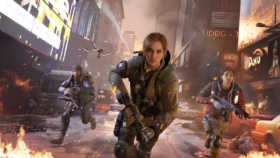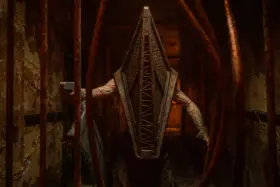For any JRPG fan who was around in the late 90s, the name Xenogears carries a certain weight.
It was more than a game; it was a dense, philosophical epic that tackled everything from Freudian psychology to Gnosticism.
It was brilliant, ambitious, and tragically incomplete, with its infamous second disc swapping gameplay for narrated story summaries due to development constraints. Its creator, Tetsuya Takahashi, tried again with the Xenosaga trilogy, another planned six-part epic that was also cut short after a troubled development cycle. The “Xeno” name, once a symbol of boundless vision, seemed cursed by it.
So when Monolith Soft, now a Nintendo-owned studio, announced a game initially called Monado: Beginning of the World, I was intrigued but cautious. When it was later rebranded to Xenoblade Chronicles to honor Takahashi’s legacy, that caution turned to heavy skepticism. Could a game under Nintendo’s family-friendly banner possibly live up to the dark, complex legacy of its predecessors? Or would it be a watered-down imitation? The answer, I happily discovered, was neither.
Xenoblade Chronicles didn’t just step out of the shadow of Xenogears; it found its own sun.
How Xenoblade Chronicles Stands On Its Own Two Feet
The first and most stunning statement the game makes is its world. You aren’t on a continent; you’re on the colossal, frozen bodies of two warring gods, the Bionis and the Mechonis. Stepping onto the Gaur Plain for the first time and seeing the metallic form of the Mechonis looming in the sky is an unforgettable moment that redefines the scale of a JRPG world. This isn’t just a backdrop; it’s a fundamental shift in design. Where Gears and Saga were often linear, story-driven corridors, Xenoblade makes exploration a core pillar of the experience, rewarding you for your curiosity.
The gameplay underwent a similar evolution, ditching traditional turn-based combat for a real-time system inspired by MMOs. You control one character while your party members auto-attack, and the strategy comes from managing your “Arts”—special abilities on cooldown timers. It’s a dynamic system that relies on positioning and chaining status effects like Break and Topple to succeed.
The true genius, however, is the Vision mechanic. As the wielder of the legendary Monado sword, your character, Shulk, can see glimpses of the future. In battle, this manifests as a warning of a powerful enemy attack, giving you a precious few seconds to react by shielding an ally, changing the enemy’s target, or interrupting the attack entirely. It’s a brilliant fusion of story and gameplay. The central theme of defying a predetermined fate isn’t just something you watch in a cutscene; it’s something you actively do in every major fight.
This more interactive philosophy extends to the story itself. The narrative is more optimistic and adventurous than its predecessors, trading dense psychological deep-dives for a more straightforward, but still emotionally resonant, tale of revenge, friendship, and saving the world. Most importantly, it’s a complete story. It has a beginning, a middle, and a deeply satisfying end, something its spiritual ancestors famously struggled to deliver. It proves that a “Xeno” game can be both ambitious and finished.
Xenoblade Is Creating A New Legacy… But Has Room To Improve
The game isn’t perfect. Its biggest flaw is the side quests. There are hundreds of them, and the vast majority are generic “kill ten rats” or “collect five flowers” MMO-style filler. However, these quests feed into the Affinity Chart, a system that tracks the relationships between hundreds of named NPCs, making the world feel alive and interconnected as you see their lives change based on your actions. It’s a trade-off, but one that ultimately succeeds in making the world feel like a real, breathing place.
For newcomers, the best way to experience this game is the Xenoblade Chronicles: Definitive Edition on the Switch. It features a complete visual overhaul, a remastered soundtrack, and numerous quality-of-life improvements that smooth out the original’s rough edges. It also includes a new epilogue, Future Connected, a character-focused story that provides a wonderful and much-needed conclusion to the arc of party member Melia.
Xenoblade Chronicles is a triumph. It took the thematic ambition of its lineage and channeled it into a game that was not only a complete, polished product but also an absolute joy to play. It honored the past without being shackled by it, creating a new legacy that has since become one of the most important JRPG franchises of the modern era. It didn’t just seize its own destiny; it created a brighter one for the entire “Xeno” series.






